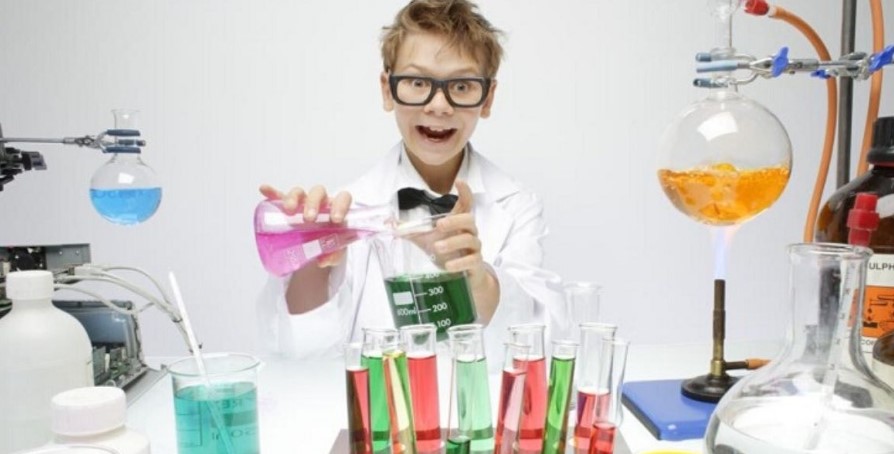Top 10 Amazing Scientific Experiments to see
1. Self Inflating Balloon
Self-inflating balloon experiment demonstrates biology and chemistry elements working with a few items in your kitchen. Those items include:
- ```
- used Soda bottle without a cover
- thin latex balloon
- elastic band
- measuring jug
- yeast, sugar, and water ```
Add two teaspoons of yeast, and a teaspoon of sugar, pour a cup of water inside the bottle, place the balloon over the bottle’s top and tie the balloon with the elastic band. Then watch to see what will happen. As the yeast (a tiny organism) consumes the sugar, respiration takes place and carbon dioxide will steadily fill the balloon.
2. Soda volcano
You need a big soda bottle, a packet of Mentos (Candy), swift hands, and open space (outdoors). Take some Mentos and put some in the bottle and move away from the bottle. The Mentos is rough, despite how fine the surface appears to you.
Effervescent drinks bubble due to a slow chemical reaction that frees carbon dioxide. The rough part of the Mentos is an additional avenue for chemical reactions to keep occurring in these nucleation spots. Try this experiment with different types of carbonated drinks and other sugar-sweetened candies.

3. Pocket Rockets
To make your rockets at home, it will require the following items:
- ```
- Old photo film container
- Alka-seltzer tablet
- A tiny blu-tak piece
- Water
- Water coloring or paint (optional) ```
Remove the lid of the photo container and fix the blu-tak on the side. Then, securely fix the Alka-seltzer tablet to the blu-tak. Pour some water into the container to mid-level and put the cover on the top tightly. You have created a burning pocket rocket.
Turn the container upside down and move away from it. As the Akel—seltzer tablet melts, it will free carbon dioxide. Since the container doesn’t have air in it, the pressure will keep mounting until it goes up.
4. Rainbow inside a glass
The experiment relies on the density of glass to create a rainbow inside a glass. You will need:
- ```
- 5 glasses
- Sugar
- water
- Various colored food coloring
- Tablespoon
- a level hand and performance sessions
- and lots of patience ```
Arrange the glass in a row and add 3 tablespoons of water to the initial four glasses. Then put 1 tablespoon of sugar in the first glass, two teaspoons in the second glass and three teaspoons in the third glass, and four in the fourth glass. Mix meticulously to melt the sugar, then add various food coloring apiece to a glass. Pour ¼ of the content in glass number 4 into glass number five.
Next, pour the following layer (glass 3) carefully to prevent content from mixing with the first coating. Put a teaspoon above the first coating and pour the combination carefully over the back of the spoon to reduce splattering. Do that slowly to get better outcomes. Repeat that process for other glasses.
The result is that the various quantities of sugar inside the water will form various water densities. As you coat them with the heaviest in the lowest part, the layers will rest on top of each other, and particle mechanics of the coating will combine.
5. Instantaneous Ice
For water to become ice, there must be a nucleus to solidify the water. Normally water constituents include particles and pollutants helping the ice to form. But the pure water won’t become ice unless it reaches a lower temperature.
If you put a closed bottle of pure water in a freezer, it will be chilled in about 3 hours, lower than the usual temperature ordinary water freezes. If you add that chilled water to a bit of ice, it will provide the water with nuclei that make it freeze instantaneously.
6. Ferromagnetic fluid
This experiment will allow you to see how magnetic fields work. To do this experiment, get a jar, iron oxide, and water. Place the potent magnet on the outer part of the jar. This will draw the iron fragments and keep trailing the magnet as you move it around.
7. Baking soda volcano
When you do this experiment, you will witness the chemical reaction between baking soda and vinegar from lava erupting from the model volcano. The chemical reaction produces carbon dioxide gas, and that pressure keeps mounting in the plastic bottle concealed inside the volcano until the gas bubbles and flares up.
8. Gooey Slime
To perform this experiment, you need:
- ```
- glue
- water
- pieces of food coloring
- borax ```
Mix glue, water, and a tiny part of the coloring, put some borax and an adhesive slime will form. That happens because the glue contains a polyvinyl acetate-a fluid polymer. The borax joins the polyvinyl acetate particles to each other, making a sizable, supple polymer: slime.
9. Curve water with inert electricity
Inflate a balloon and rub it against your head for several minutes to create a nice static charge. Next, turn a tap on and let a tiny bit of water flow steadily. Bring a balloon near the stream of water and see water happens.
10. Awesome bouncing
Obtain a tennis ball. Throw it on the flow and verify how high it bounces. Next, put the tennis ball on a basketball with one hand and support the tennis ball with the other. Drop the two balls together at precise moments. Then, go to your neighbor to get your tennis ball.